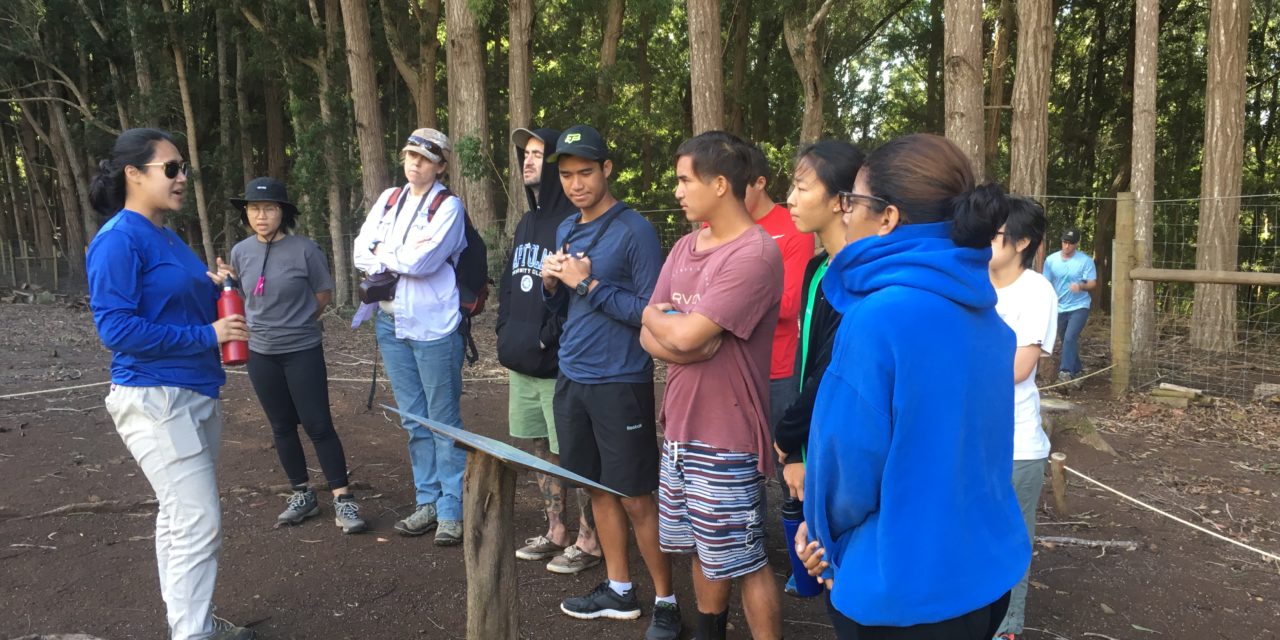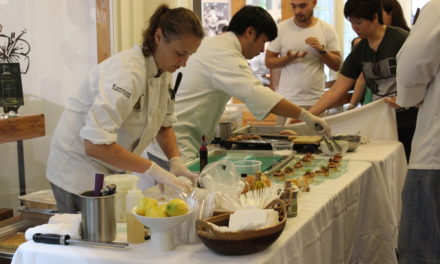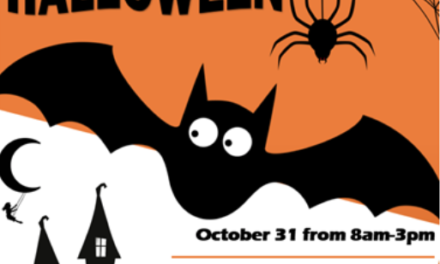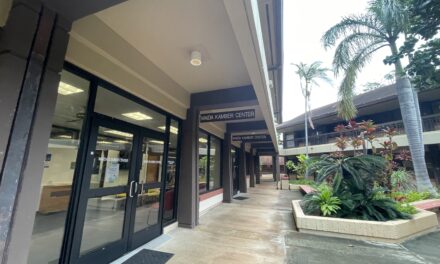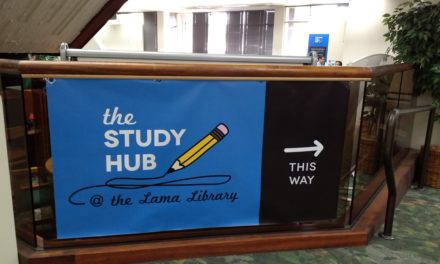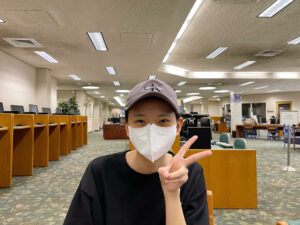By Lexus Yamashiro | Staff Writer
KCC’s Ecology Club president Katie Gipson, along with 10 other members, took an educational trip to Lānaʻi to execute land restoration work while learning how Native Hawaiians lived a sustainable life from Jan. 12-15. Accompanied by Dr. Wendy Kuntz, the faculty advisor of Ecology Club, students got the opportunity to work alongside Lānaʻi residents to restore fishponds and remove invasive plants.
Students camped at Hulopoʻe Beach Park and chose which sites they wanted to visit on the island by using the Lānaʻi Guide app that indicated historical, agricultural, and scenic places such as the Waiʻopae fishpond and Hiʻi heiau. On Saturday, Jan. 13, the group collaborated to rebuild the fishpond’s wall and continued work on Sunday to remove kiawe (an invasive thorn plant), trash, and driftwood that washed up on the shore near the fishpond. Gipson believed that what they removed from the shoreline would later be turned into mulch that would be used on the island to grow native plants.
With no power tools and limited resources, the group experienced what it was like to dig around kiawe trees by hand. Where it was once a dense eucalyptus tree forest, the students pulled weeds and removed strawberry guava (invasive trees species) and California grass near the Hiʻi heiau. A part of the land was cleared to plant native plants.
“When we were there as Ecology students, we got to learn about invasive species and the problems [residents] have there,” said Honoka Katayama, who attended the trip. “[Oʻahu has] problems with pigs, but they have a lot of problems with deers.”
Planning trips once a semester, Ecology Club has traveled to Big Island, Molokaʻi, and areas on Oʻahu to perform restoration and conservation work similar to its Lānaʻi trip. Having planted 150 native plants at the Pahole Natural Area Reserve in Waiʻanae, Gipson said the club tries to plant as many native plants as it can throughout the islands as a step to decrease invasive ones.
“I’d say that the ultimate goal is to educate people about their own state, especially the plants,” Aukai said. “You always learn things when you go on trips like this, it always just adds upon your knowledge of things.”
From Feb. 8-10, the Ecology Club plans to visit Big Island to participate in the Hawaiʻi Sustainability in Higher Education Summit in which participants can gain insight of indigenous ancestral knowledge and share practices for meeting efficient water, energy, and waste reduction targets. On Saturday, Feb. 24, the group also looks forward to going to Kalaheʻe Ridge in Waimea Valley on Oʻahu to remove invasive plants and plant native ones in that area.
Gipson said that students who are interested in attending these trips or are looking to join the club can sit in on Ecology Club’s weekly meetings on Thursdays from 11:30 a.m. to 12:30 p.m. in the Kokiʻo building’s STEM Center in room 202.
Looking to visit Maui, Kauai, and Kahoʻolawe in the future, the club hopes that what it has learned so far will benefit the students of KCC.
Ideas to have more native plants around campus and feral animal control is what Ecology Club members hope to integrate into KCC according to Gipson. A push to practice being sustainable such as making recycling bins available throughout the campus and installing more bottle filling water stations to reduce the purchase of plastic bottles are other ways that the club hopes will educate those throughout KCC as well.
“We have people like doctor [Kuntz] who wants to help us succeed,” said Han Quach, a student of Ecology Club. “I think that’s what KCC students can get, not necessarily directly from us going on this trip [to Lānaʻi] but hopefully as an invitation from them to be a part of our little family.”

